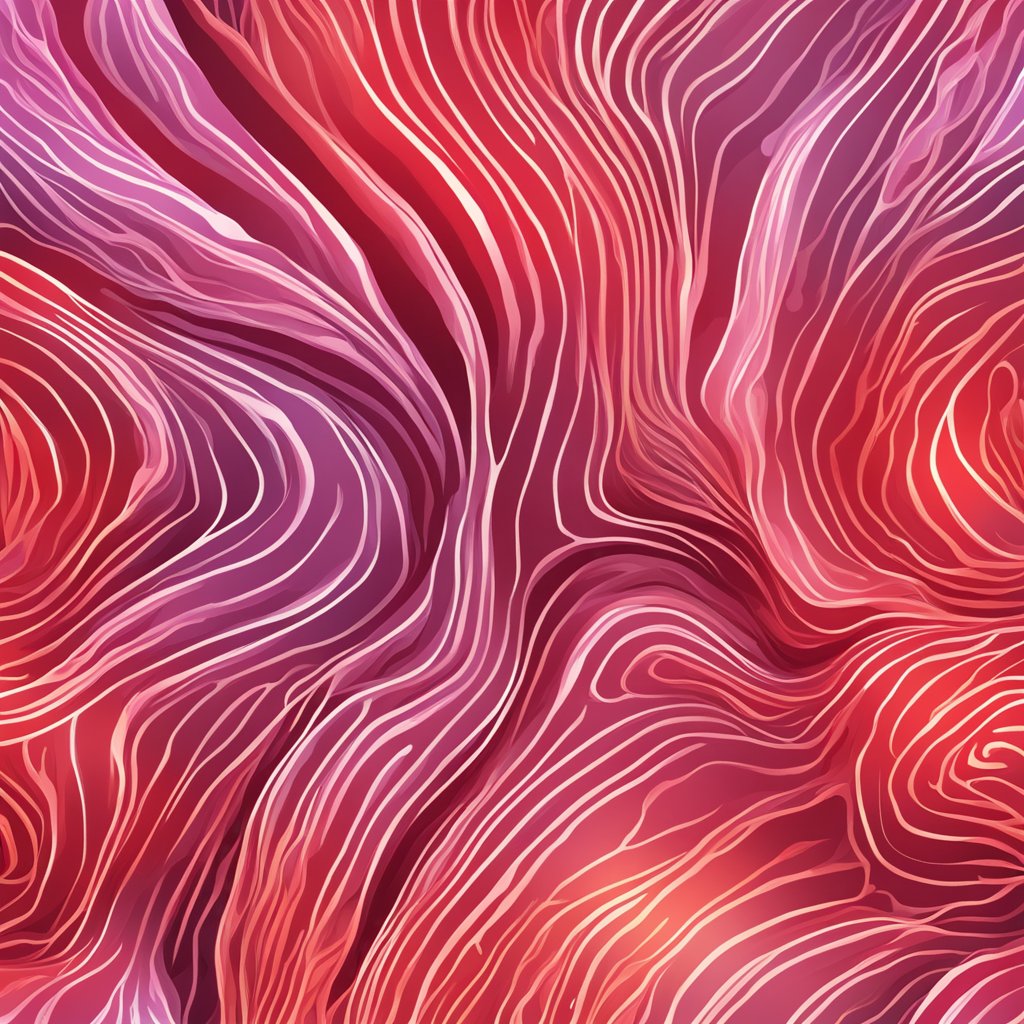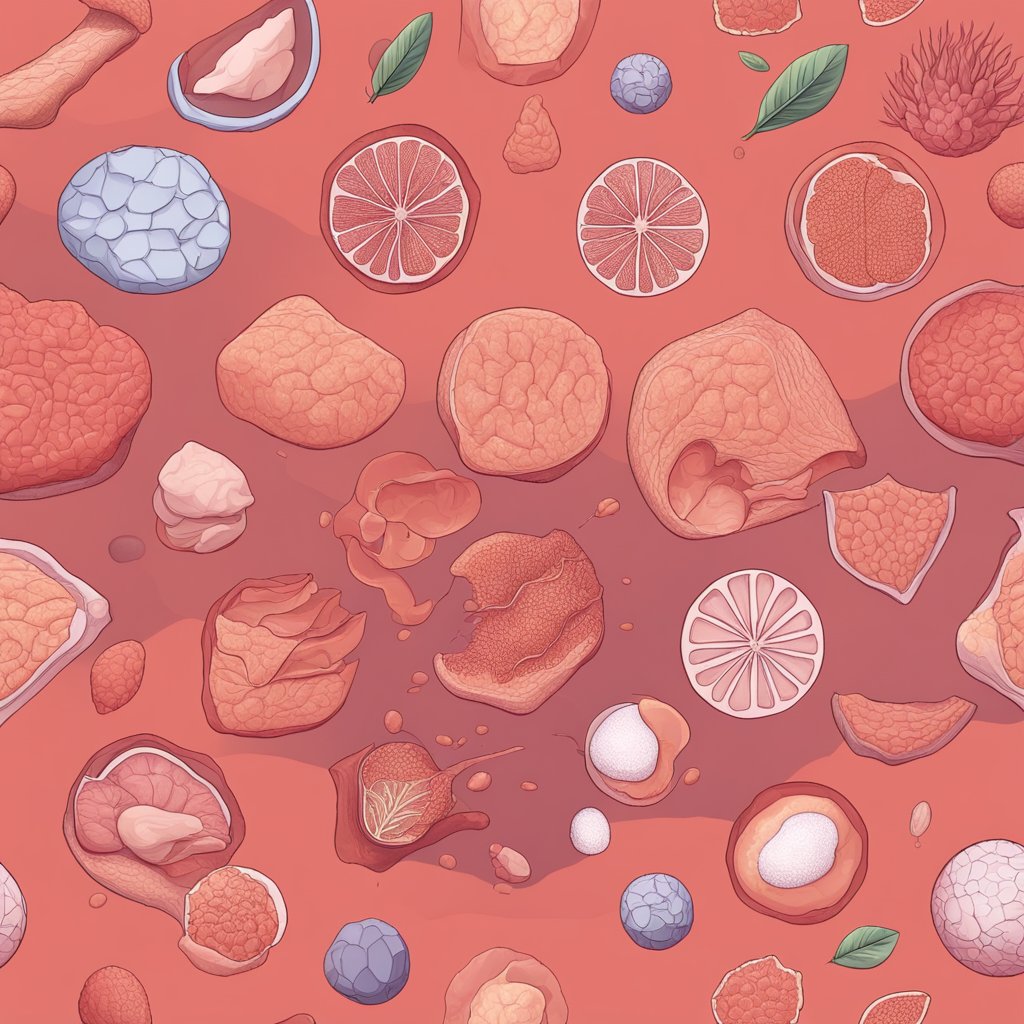Post-inflammatory erythema, commonly abbreviated as PIE, is a type of skin discoloration that follows an inflammatory process, especially prevalent after episodes of acne. Manifesting as pink or red spots on the skin, PIE occurs when blood vessels are damaged or dilated during the cycle of an inflammatory condition. As the body goes about its natural healing process, these areas of discolored skin become evident, potentially leading to aesthetic concerns for individuals affected by this condition.

My experience with understanding and addressing post-inflammatory erythema has solidified the importance of recognizing the cause-and-effect relationship between inflammation and skin changes. When an inflammatory response in the skin occurs, such as from acne, the healing process may leave behind these red or pink marks. Although not physically harmful, PIE can be a cosmetic concern, prompting individuals to seek treatment options. Numerous treatments, ranging from home remedies to clinical interventions, exist to help fade PIE, but these treatments should be approached with an understanding of their varying effectiveness and the timeline required for visible results.
Key Takeaways
- Post-inflammatory erythema presents as pink or red spots on the skin after inflammation, like acne.
- Accurate diagnosis of PIE typically involves visual examination, but persistent cases may require professional assessment.
- Treatment and management of PIE encompass both clinical procedures and preventative skincare practices.
Causes and Risk Factors

Post-inflammatory erythema (PIE) is primarily caused by conditions that lead to inflammation in the skin. These inflammations can result in dilated blood vessels and lingering redness. Now, let’s explore the two main contributors.
Acne and Skin Trauma
My experience with PIE has shown that acne is a significant cause. When you have acne, the inflammation damages the skin, which can cause the blood vessels near the surface to become more visible. This is particularly true for individuals with a history of severe or cystic acne. Skin trauma such as cuts, scrapes, or surgical procedures also poses a risk as these actions can trigger the body’s inflammatory response.
Inflammatory Skin Conditions
In addition to acne, other inflammatory skin conditions like eczema or rosacea can lead to PIE. These conditions compromise the skin barrier and can stimulate an inflammatory response, causing red or pink patches to appear. My research affirms that collagen production is affected during the healing process, which is crucial for the repair of the skin but may also play a role in the development of PIE. Moreover, individuals with darker skin tones are not exempt from PIE; in fact, they may experience it differently as the contrast between their skin tone and the erythema can be more pronounced.
Symptoms and Diagnosis
In discussing the symptoms and diagnosis of post inflammatory erythema (PIE), it’s important to focus on its identification and how it differs from similar skin conditions such as hyperpigmentation.
Identifying Post Inflammatory Erythema
Post inflammatory erythema is characterized by red or pink spots that appear on the skin following inflammation. These spots are the result of damaged capillaries beneath the skin’s surface. I examine the affected area, noting signs of redness that indicate PIE, which can often be confused with post inflammatory hyperpigmentation (PIH).
PIE is more prevalent in individuals with lighter skin tones as the redness stands out more against their skin. I use the press test, where applying pressure to the area diminishes the redness temporarily, suggesting PIE rather than hyperpigmentation.
Differentiating from Hyperpigmentation
Differentiating PIE from hyperpigmentation is crucial for the correct treatment. Hyperpigmentation involves darkening of the skin and is not limited to people with light skin tones. Hyperpigmented lesions do not change color when pressure is applied. To differentiate, I typically recommend a consultation with a dermatologist who may employ the following:
- Visual Examination: A simple visual inspection to detect the presence of darker pigmentation versus redness.
- Diascopy: Applying a glass slide to the skin to assess if redness disappears under pressure. If it does, it’s likely PIE.
To summarize, diagnosis involves careful examination, and may include tools or tests like the press test to accurately identify PIE and distinguish it from PIH.
Treatment Options
Effective management of post inflammatory erythema (PIE) includes a range of topical treatments and advanced laser and light therapies. These strategies aim to reduce the visible redness and improve skin texture associated with PIE.
Topical Treatments
Topical treatments for PIE revolve around ingredients that strengthen the skin’s barrier, promote healing, and offer anti-inflammatory effects. Key agents include:
-
Vitamin C: This powerful antioxidant can help reduce redness and encourage collagen production. I recommend applying a vitamin C serum once daily to maximize its benefits.
-
Niacinamide: A form of vitamin B3, niacinamide boosts the skin’s elasticity, reduces inflammation, and lightens hyperpigmentation. For optimal results, using a product with 4%-5% niacinamide concentration twice daily is ideal.
-
Retinoids and Tretinoin: These vitamin A derivatives accelerate cell turnover and can minimize the appearance of PIE. It is important to start with a lower concentration to avoid irritation and gradually increase as tolerated.
-
Azelaic Acid: Noted for its ability to reduce inflammation and bacterial growth, azelaic acid can be used in gel or cream form, usually at a 15%-20% concentration, to soothe redness and improve hyperpigmentation.
Laser and Light Therapies
I’ll explore several effective laser and light options for managing PIE:
-
Pulsed Dye Laser (PDL): Specifically targets blood vessels, reducing redness from PIE. Typically, multiple sessions are needed for maximum effectiveness.
-
Intense Pulsed Light (IPL): Helps to diminish the appearance of red marks by delivering a spectrum of light to the skin’s deeper layers. A series of treatments are often recommended.
-
Microneedling: While not a laser treatment, microneedling creates micro-injuries which can stimulate collagen production and may help with PIE when combined with topical treatments.
Laser and light therapies should be performed by experienced professionals, and it’s essential to follow post-procedure care instructions to ensure proper healing and avoid additional pigmentation issues.
Prevention and Management
In managing post-inflammatory erythema, I focus on protective skincare routines and adjustments to lifestyle that are proven to be effective. Early intervention and proper care can minimize the risk of developing this condition.
Skincare Routines and Lifestyle
Sun Protection: I always incorporate a broad-spectrum sunscreen with at least SPF 30 into my daily routine to protect my skin against further inflammation and damage. Consistent use of sunscreen can prevent the exacerbation of post-inflammatory erythema.
Moisturizing: A crucial step in my skincare routine involves using a gentle moisturizer to maintain the skin’s barrier function. This helps in reducing inflammation and aiding the healing process.
Exfoliation: Chemical exfoliants such as glycolic acid and salicylic acid can be beneficial. I use these sparingly to avoid over-exfoliation, which can worsen erythema. Glycolic acid promotes skin renewal whilst salicylic acid helps to regulate oil production.
Preventative Care: It’s important for me to be proactive with my skin’s health. This includes never picking at the skin, sticking to a consistent skincare routine designed for sensitive skin, and avoiding triggers known to cause inflammation.
Implementing these methods effectively can prevent and manage post-inflammatory erythema, reducing the potential for long-term skin changes. By following this advice, my skin remains healthy and less prone to the persistent redness associated with this condition.
Recovery and Support
When recovering from post-inflammatory erythema (PIE), I must consider both the physical healing of my skin and the emotional impact it may have. Proper post-treatment care is crucial to support collagen production and minimize scarring, and addressing the psychological effects can reduce stress and aid in the overall healing process.
Post-Treatment Care
To facilitate my skin’s recovery and reinforce the skin barrier, I adhere to a gentle skincare routine. Here’s a practical approach to post-treatment care:
- Gentle Cleansing: I use a mild, non-irritating cleanser to avoid disrupting the delicate skin barrier.
- Moisturization: Daily, I apply a fragrance-free moisturizer to maintain hydration and support the skin barrier.
- Sun Protection: Wearing sunscreen with at least SPF 30 helps me prevent further damage and reduces blood vessel dilation.
- Topical Treatments: I opt for products containing ingredients that promote collagen production, such as retinoids or vitamin C.
- Avoid Harsh Treatments: Harsh exfoliants and invasive procedures are set aside until my skin has fully recovered.
I follow this regimen consistently to improve my skin’s appearance and hasten the healing process.
Emotional and Psychological Effects
The journey to recover from PIE can be as much emotional as it is physical. I’m mindful of the psychological impact it may have on me and take steps to manage stress, which can exacerbate skin issues:
- Skin-Specific Stress Management: I practice relaxation techniques like deep-breathing exercises or meditation to help keep my stress levels in check, understanding that stress can lead to blood vessel dilation and exacerbate PIE.
- Seek Support: Sharing experiences with others who understand PIE or seeking professional advice offers me emotional relief and invaluable coping strategies.
- Set Realistic Expectations: I remind myself that recovery takes time and that small improvements are significant achievements.
I focus on fostering a positive mindset to support my skin’s healing and my well-being.
Frequently Asked Questions
In this section, I’m addressing common inquiries about treatments and healing times related to post-inflammatory erythema (PIE), including the effectiveness of various remedies and professional therapies.
What treatments are available for post-inflammatory erythema?
There are multiple treatment options for PIE, ranging from topical treatments like silicon gels and retinoids to procedural interventions such as vascular lasers. I recommend consulting a dermatologist to tailor therapy to your specific skin type and condition.
How long does it typically take for post-inflammatory erythema to heal?
The healing time for PIE can vary from a few weeks to several months, depending on its severity and the individual’s skin type. Consistent treatment and sun protection can expedite the healing process.
Are there effective home remedies for managing post-inflammatory erythema?
Some home remedies that may aid in the reduction of PIE include applying aloe vera for its soothing properties and using green tea extract, which is known for its anti-inflammatory effects.
Can laser therapy successfully treat post-inflammatory erythema?
Yes, laser therapy can be an effective treatment for PIE. Pulsed dye lasers and Nd
What medications do dermatologists recommend for post-inflammatory erythema?
Dermatologists often recommend topical medications such as azelaic acid and niacinamide for their anti-inflammatory properties. Oral medications may be advised for more severe cases, but always consult your dermatologist for a personalized treatment plan.
Is using vitamin C an effective method for treating post-inflammatory erythema?
Vitamin C has antioxidant properties and can promote collagen synthesis, making it beneficial in PIE treatment protocols. It can help diminish redness and support skin’s natural healing. Use a stabilized form of vitamin C for best results.